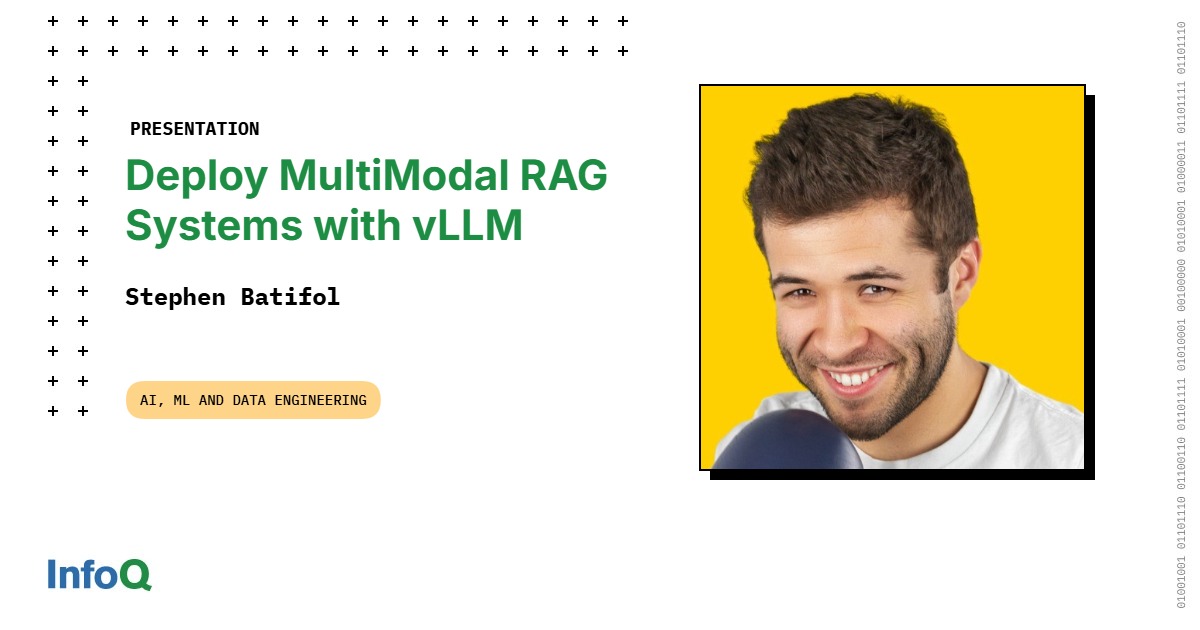
"Why is it so popular? Why is it everywhere? Why is it still important nowadays? It's because vectors unlock your unstructured data. Think of images, audio, videos, user documents. Then, what's happening is that you're going to put that through your deep learning model. Then, that's how you get vector embeddings. You then store them in a vector database. Then, from now on, you can perform search."
"We're going to talk about multimodal RAG systems. I'll be using vLLM and I'll be using Pixtral from Mistral. I will talk a tiny bit about vector search, vector databases, so that you have a better idea of how everything works behind the scene. There's lots of talk by vector databases. There's lots of people saying like, mine is better, mine is doing that. I'm just going to give you a quick idea of what to look for, and which index to pick and when."
Multimodal RAG systems combine large language models and other modalities to enable retrieval-augmented generation. vLLM and Pixtral are example tools used for model inference and image handling. Vector search stores embeddings derived from deep learning models to unlock unstructured data such as images, audio, video, and documents. Vector databases support search, RAG, recommendation systems, anomaly detection, and scientific tasks like protein design. Index selection and vector database features influence performance and suitability for different workloads. Embedding model choice has significant impact on retrieval quality. Practical demonstrations and live demos illustrate integration of vLLM, Pixtral, and vector databases for multimodal retrieval pipelines.
Read at InfoQ
Unable to calculate read time
Collection
[
|
...
]